
The San Francisco Golden Gate will celebrate its 75th anniversary since its opening
San Francisco - For 75 years, the red-orange steel colossus spanning the strait has been one of the symbols of America. The San Francisco Golden Gate Bridge, which opened on May 27, 1937, is often referred to as one of the most beautiful bridges in the world and remains one of the largest structures of its kind worldwide, although it has been surpassed in size several times.
The construction of the more than 2700-meter-long colossus was necessitated in the 1930s by the fact that San Francisco, separated by the bay, had somewhat lagged behind the robust growth of California. The decision to bridge the strait was made as early as 1930, and construction, financed by bonds, began in January 1933. Joseph Baermann Strauss was put in charge of the construction, with architect Irving Morrow as his advisor. Strauss, who had already addressed the idea of bridging the Bering Strait in his thesis and had been preparing the bridge project over San Francisco Bay for 15 years, became an American legend upon the successful completion of the project.
Because it was an extraordinary site, the construction had to be extraordinary as well. This was undoubtedly achieved. The Golden Gate Bridge long ruled among suspension bridges with the largest span between the pylons that carry the cables. The pylons have an impressive height of 227.4 meters, even by today's standards, with a span of 1280 meters between them. The roadway, which hangs on steel cables, is 67 meters above the water.
Builders had to overcome storms, fog, and rapidly changing tides. Additionally, a cargo ship collided with the under-construction bridge. Despite this, the bridge was completed in a record time of 53 months. It consumed over a million tons of steel and cost an enormous sum of 17 million dollars at the time.
The steel giant, filmed a thousand times and serving as a backdrop for many Hollywood movies, has survived two strong earthquakes without problems, during which its deck only swayed slightly. For the past 75 years, dozens of painters have been employed to combat corrosion with new coatings. A guide had to be printed for maintenance workers so they wouldn't get lost in the hollow structure of the pylons.
The bridge, which connects San Francisco with Northern California, is not only a significant transportation artery where over 100,000 cars pass daily in six lanes for a toll of at least five dollars (paid only when heading into San Francisco), but it is also a tourist attraction offering breathtaking natural scenery as well as views of the city and the former prison Alcatraz. Unfortunately, it attracts not only visitors with cameras but is also sought after by suicides from around the world. Moreover, after the terrorist attacks on the United States, it was marked as one of the possible targets for terrorists.
The bridge, which shortened the journey north by dozens of kilometers, remains one of the largest and most beautiful structures of its kind. However, in recent decades, it has been surpassed several times; currently, the longest suspension bridge with a main span between pylons of 1991 meters is Japan's Akashi Kaikyō Bridge. Other bridges have also risen over the San Francisco Bay, such as the nearly seven-kilometer Bay Bridge, which opened half a year after the Golden Gate.
The construction of the more than 2700-meter-long colossus was necessitated in the 1930s by the fact that San Francisco, separated by the bay, had somewhat lagged behind the robust growth of California. The decision to bridge the strait was made as early as 1930, and construction, financed by bonds, began in January 1933. Joseph Baermann Strauss was put in charge of the construction, with architect Irving Morrow as his advisor. Strauss, who had already addressed the idea of bridging the Bering Strait in his thesis and had been preparing the bridge project over San Francisco Bay for 15 years, became an American legend upon the successful completion of the project.
Because it was an extraordinary site, the construction had to be extraordinary as well. This was undoubtedly achieved. The Golden Gate Bridge long ruled among suspension bridges with the largest span between the pylons that carry the cables. The pylons have an impressive height of 227.4 meters, even by today's standards, with a span of 1280 meters between them. The roadway, which hangs on steel cables, is 67 meters above the water.
Builders had to overcome storms, fog, and rapidly changing tides. Additionally, a cargo ship collided with the under-construction bridge. Despite this, the bridge was completed in a record time of 53 months. It consumed over a million tons of steel and cost an enormous sum of 17 million dollars at the time.
The steel giant, filmed a thousand times and serving as a backdrop for many Hollywood movies, has survived two strong earthquakes without problems, during which its deck only swayed slightly. For the past 75 years, dozens of painters have been employed to combat corrosion with new coatings. A guide had to be printed for maintenance workers so they wouldn't get lost in the hollow structure of the pylons.
The bridge, which connects San Francisco with Northern California, is not only a significant transportation artery where over 100,000 cars pass daily in six lanes for a toll of at least five dollars (paid only when heading into San Francisco), but it is also a tourist attraction offering breathtaking natural scenery as well as views of the city and the former prison Alcatraz. Unfortunately, it attracts not only visitors with cameras but is also sought after by suicides from around the world. Moreover, after the terrorist attacks on the United States, it was marked as one of the possible targets for terrorists.
The bridge, which shortened the journey north by dozens of kilometers, remains one of the largest and most beautiful structures of its kind. However, in recent decades, it has been surpassed several times; currently, the longest suspension bridge with a main span between pylons of 1991 meters is Japan's Akashi Kaikyō Bridge. Other bridges have also risen over the San Francisco Bay, such as the nearly seven-kilometer Bay Bridge, which opened half a year after the Golden Gate.
The English translation is powered by AI tool. Switch to Czech to view the original text source.
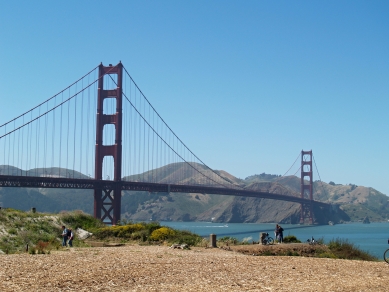
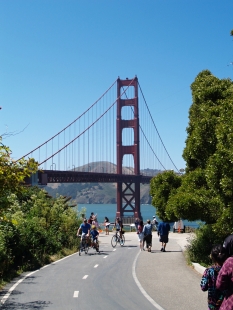
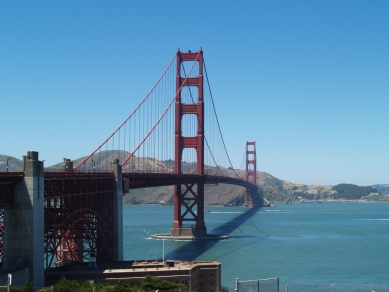
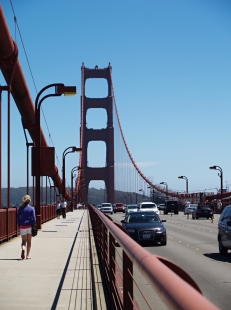
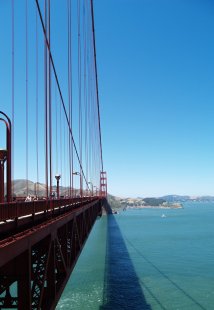
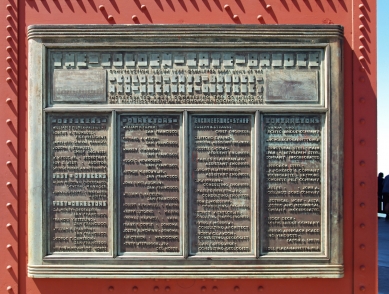
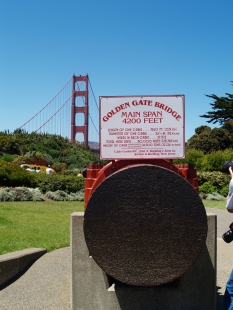
0 comments
add comment












